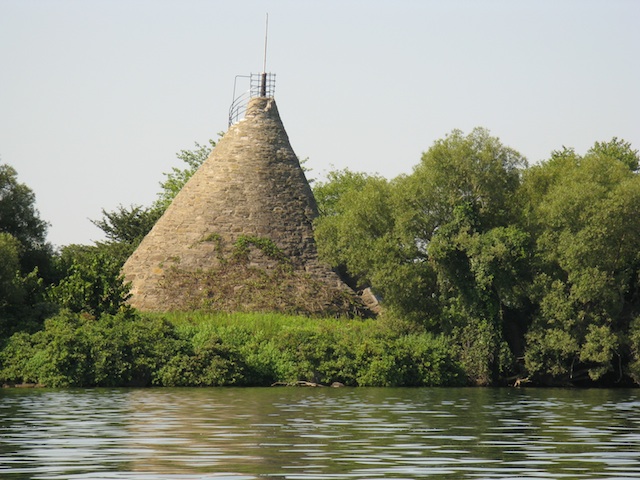Here's where you can learn a little Ontario history
Glengarry Cairn

Photos by contributor Wayne Adam - December, 2009



Photo Source - Canadian Heritage Gallery
Plaque Location
The United Counties of Stormont, Dundas and Glengarry
The Township of South Glengarry
At the foot of the staircase of the cairn
at Glengarry Cairn National Historic Site
(not open to the public as of 2009)
on Cairn Island off South Lancaster in the St. Lawrence River
N 45 07.309 W 74 29.391
Plaque Text
This cairn was erected under the supervision of Lieut-Col. Lewis Carmichael of the Imperial Army, then stationed in this district on particular service, by the Highland Militia of Glengarry which had aided in the suppression of the Canadian Rebellion of 1837-38, to commemorate the services of that distinguished soldier Sir John Colborne, who was declared by the historian Napier to have been, 'A man of singular talent for war' and who commanded her majesty's forces in Canada at that critical period. He had previously served with conspicuous merit throughout the Peninsular War and elsewhere and had greatly distinguished himself at Waterloo when in command of the 52nd regiment. He was Lieut. Governor of Upper Canada from November 1828 to January 1836, Governor General of Canada in 1839, and afterwards became Field Marshall Lord Seaton G.C.B. The cairn was repaired and this tablet erected in 1905.
More
Forts and Other Military Places
Here are the comments for this page.
Posted June 24, 2010
My family is from South Lancaster. I have been desperating looking for good photo's or a print of the Cairn and or post cards. Would you please notify me at if you are aware of any place that would carry these items. Thank you for doing this update on the Cairn and keeping the interst alive.
Catherine Livingston
Posted December 30, 2009
As I understand it, there are two reasons the island was closed to the public: (1) Claims were made that burial remains had been found, and there was a desire to keep them undisturbed. There appears to be some dispute, locally, about this, and I heard disparaging remarks about them being "chicken bones" instead. This likely reflects resentment against closing what had become a favored public park, once in better repair, and a secret late-night party/drinking spot. I suppose archeologists want to make sure. Perhaps complicating research efforts, however, is reason (2): A native land claim to the island. Until things are sorted out, this national historic site within the national park system, managed by Parks Canada, remains closed. I'm unclear when the dispute began. Folks make unofficial visits, but could encounter Native boat patrols. You can't fence off an island, after all, and boating and fishing the waters immediately around it is permitted. The closure is unfortunate, because this is one of the country's oldest national monuments (1840), even if it does pay homage to overseas forces which suppressed a patriotic quest for democracy. In Quebec, monuments celebrate the Patriot side! A similar closed national park situation has existed for decades at Hohokam Pima National Monument in Arizona. It's a more extreme example, virtually erased from all maps so tourists can't find it. Ironically, it's next to an Interstate highway. -Wayne
Posted December 28, 2009
why was Glengarry Cairn Historical Plaque island closed to the public in 2009 ?
Here's where you can write a comment for this page.
Note: If you wish to ask me a question, please use the email link in the menu.
Note: Comments are moderated. Yours will appear on this page within 24 hours
(usually much sooner).